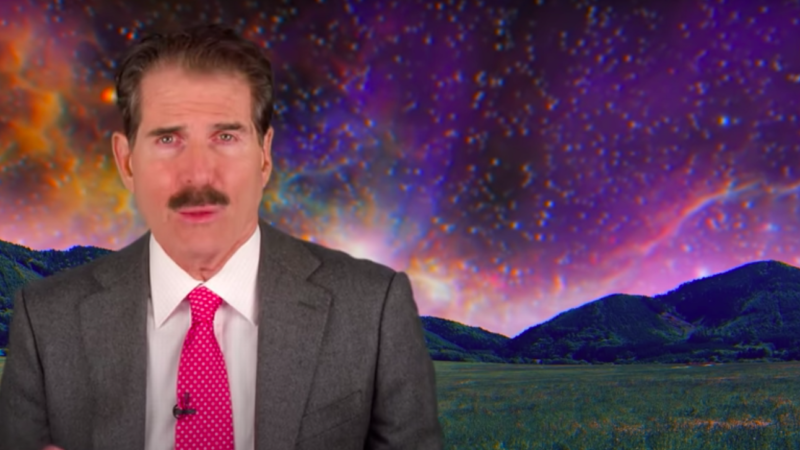
With troops finally scheduled for withdrawal by September after two decades of conflict, America’s intervention in Afghanistan seems destined to go down in history as an accidental forever war. Only peripherally part of the country’s policy debates, and never really occupying the attention of members of the public other than the few who had relatives involved in the fighting, U.S. intervention almost seems to have stumbled on because people neglected to bring it to an end. Even as polls indicate broad assent, ending years of bloody struggle comes with minimal fanfare.
“A majority of Americans (58%) approve of the decision to withdraw all troops,” according to recent Economist/YouGov polling. With majority support among military families and military personnel for a withdrawal negotiated by the Trump administration and enacted (with a few months’ delay) by the Biden administration, the end of America’s intervention in Afghanistan is one of the few issues that seems capable of pulling Americans together these days. If that’s the case, though, why did it take so long?
The problem is that Americans seem to desire an end to the conflict only when they give the matter any thought—and that’s not very often at all.
“More than half of Americans (57%) do not follow any news and information about the U.S. involvement in Afghanistan,” an AP/NORC poll found in October 2020. The age group least likely to pay any attention to the lingering conflict in the region was made up of Americans between the ages of 18 and 29—precisely those most likely to fill the ranks of troops sent to the region.
That inattention to the issue has consequences. Pollsters found that knowledge of American casualties reduced support for increasing the troop presence and raised support for ending U.S. intervention in Afghanistan—but Americans generally lack that awareness. Unsurprisingly, it’s relatively easy to be indifferent to an ongoing war if you’re oblivious to its costs in dead and wounded among your own military personnel and the people who live in and around the battlefields.
That indifference helps to explain why, despite current acclaim for the end (we hope) of the U.S. role in Afghanistan, public opposition to the war only briefly matched support for it—in 2014, during the troop withdrawal of the Obama years. After that, according to Gallup, belief that “it was a mistake sending troops to fight in Afghanistan” stalled at about 43 percent, ten points behind support for the conflict.
Meanwhile, politicians quietly replaced many of the troops pulled out in 2014 with thousands of private contractors who shouldered much of the war effort out of public view. As of November 2019, Brown University’s Costs of War project estimated deaths at 2,298 for the U.S. military, and 3,814 for contractors (deaths among Afghan’s military and police were estimated at 64,124, and among civilians at 43,074).
“The new data comes amid concerns that the administration could increasingly turn to private companies to carry out the war,” U.S. News & World Report noted in 2019. “Officials and analysts, meanwhile, are raising alarm that the U.S. government is concealing the situation on the ground.”
Of course, concealing the situation on the ground wasn’t much of a challenge when more than half of Americans didn’t follow any news at all about the situation in Afghanistan. They didn’t seek information about a war about which they showed remarkably little interest—and only situational outrage.
“The United States is knee-deep in at least three international military conflicts at the moment — in Afghanistan, Iraq and Libya,” NPR pointed out in 2011. “Now, despite the U.S. military’s concurrent and costly entanglements, the National Mall is quiet and the streets of Washington are pretty much protester-free … Where have all the protesters gone?”
Where did the protesters go? Many of them, it seems, went home after achieving partisan political goals they disguised as concern for peace.
“[T]he antiwar movement demobilized as Democrats, who had been motivated to participate by anti-Republican sentiments, withdrew from antiwar protests when the Democratic Party achieved electoral success, if not policy success in ending the wars in Iraq and Afghanistan,” wrote Michael Heaney of the University of Michigan and Fabio Rojas of Indiana University in a study published in 2011. “While the election of Barack Obama had been heralded as a victory for the antiwar movement, Obama’s election, in fact, thwarted the ability of the movement to achieve critical mass.”
President Barack Obama, of course, increased the U.S. troop presence in Afghanistan before swapping thousands of military personnel out for security contractors. His administration is one of three—along with those of George W. Bush and Donald Trump—cited by The Washington Post as having concealed the failure of the war for years on end.
“A confidential trove of government documents obtained by The Washington Post reveals that senior U.S. officials failed to tell the truth about the war in Afghanistan throughout the 18-year campaign, making rosy pronouncements they knew to be false and hiding unmistakable evidence the war had become unwinnable,” the newspaper reported in December 2019.
That the war was unwinnable was quite an unpleasant truth to conceal through two decades of conflict. But it was made relatively easy by the fact that even many of the participants in the antiwar movement weren’t terribly concerned about the war in Afghanistan. When you add in the uninformed indifference of much of the rest of the population, there was nothing to deter a rotating cast of politicians and military officers from fiddling around the edges of a war like it was a game, ignoring its accumulating costs as they tried to extract victory from an impossible situation.
Ultimately, then-President Donald Trump lost patience with the situation and negotiated a May 1 end to U.S. intervention in Afghanistan—an agreement that President Biden says he’ll honor, though with a delay until September. Well, that’s what government officials say, and we’ve been down this path before. This time, those of us interested in seeing a conclusion to the accidental forever war in Afghanistan will have to pay attention to make sure it finally comes to an end.
from Latest – Reason.com https://ift.tt/32VeJTL
via IFTTT


